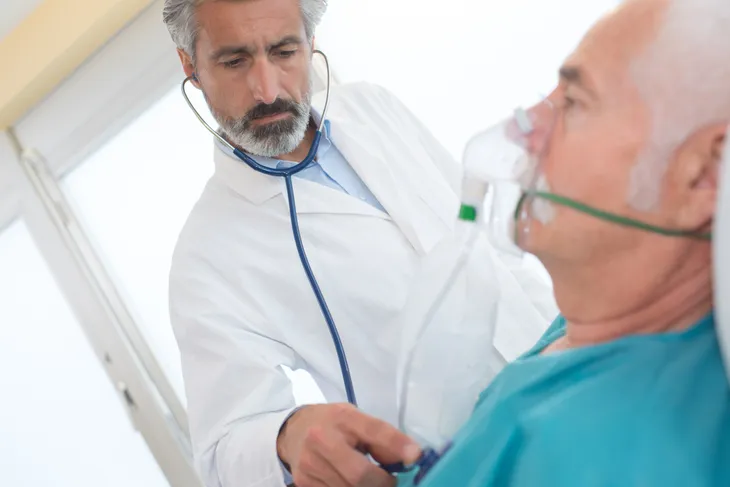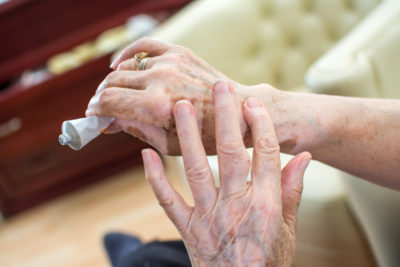Chronic obstructive pulmonary disease (COPD) is common form of chronic inflammatory lung disease that often results from smoking and is one of the leading causes of death. An estimated 30 million people in the United States alone have COPD.
Despite the prevalence of this disease, many people still don’t really know what it is. Not only that, but some people might not even realize they have it because the symptoms can appear slowly and subtly, taking years to worsen.
According to the Centers for Disease Control and Prevention, 15.7 million people were diagnosed with COPD in 2014. Half of those 15 million people were blindsided by their diagnosis. If left untreated, this disease can become extremely serious resulting in a viral or bacterial lung infection, or even complete loss of lung function. To prevent this from happening, we need to be more aware of the early warning signs. Do you know if you’re exhibiting signs of COPD?
What is COPD?
COPD is an umbrella term used to describe progressive lung diseases such as emphysema, chronic bronchitis, and refractory (non-reversible) asthma. All three of these conditions cause the lungs to become inflamed due to a buildup of mucus which eventually obstructs the airflow into the lungs resulting in difficulty breathing, coughing, and wheezing.
The two most common conditions are emphysema and chronic bronchitis, says the Mayo Clinic.
- Emphysema: is when the smallest air passages of the lungs are damaged due to cigarette smoke.
- Chronic bronchitis: is when the bronchial tubes which carry air into the air sacs of the lungs become inflamed resulting in coughing and mucus production.
- Refractory asthma: is a type of asthma that cannot be treated with typical medications. During an attack, the bronchial airway will tighten and swell. In normal cases of asthma, medications can reverse these effects, but with refractory asthma, the swelling and tightening cannot be reversed.
According to the Lung Association, 80 to 90-percent of all COPD cases are caused by smoking. But you can get COPD even if you’re not a smoker. This disease can also be caused by second hand smoke, frequent lung infections, air pollution, and poor indoor air quality.
Unfortunately, COPD is a condition that worsens over time. If it is left untreated, it can become extremely serious. However, it is possible to treat this condition. Wth the proper care, you can manage the symptoms and enjoy a better quality of life.
Early Warning Signs
The symptoms of COPD will start off subtle and might not be noticeable to the average person. If left untreated, they will become worse overtime. The Lung Association lists the following as the most common symptoms of COPD:
- a cough that lasts a long time (longer than 3 months)
- a cough with mucus
- feeling short of breath
- lung infections (the flu, acute bronchitis, pneumonia, etc) that may last longer than other people
- wheezing
- fatigue
- tightness in the chest
The problem with COPD is that the symptoms often resemble other common respiratory illnesses like a cold or asthma, or even just natural aging. This is why many people ignore them, but feeling tired all the time isn’t normal. In addition to that, you shouldn’t become winded just from walking up the stairs or performing normal, everyday tasks. Go see a doctor if you’re experiencing one or more of these symptoms.
Serious Symptoms of COPD
Since COPD is a progressive, chronic disease, the symptoms will only become worse and more severe over time. They will not go away or get better on their own. If left untreated, those subtle symptoms that resembled a nagging cough will become much worse and bring a slew of serious complications with them. Many of which will affect your respiratory system.
Later stages of COPD will result in symptoms like:
- extreme fatigue
- swelling of the feet, ankles, or legs
- unexplained weight loss
Seek immediate medical attention if you notice any of the following symptoms:
- blue or gray fingernails or lips which is due to low levels of oxygen in the blood
- trouble catching your breath, so much so that you have trouble speaking
- feeling confused or faint
- racing heartbeat
How to Treat COPD
This disease can be tricky to diagnose so it’s important that you go see a doctor instead of trying to self-diagnose. Many smokers are wrongly diagnosed with this condition. On the other hand, lots of people have COPD, but are not diagnosed until the disease has become quite advanced.
In order to diagnose COPD, a doctor will ask about your history with cigarette smoking, chemical fumes, or exposure to any other chemicals that could have irritated the lungs. You’ll then have to undergo several tests in order to draw a definitive diagnosis. These tests may include:
- lung (pulmonary) function tests: to measure the amount of air you inhale and exhale, and whether or not the lungs are delivering enough oxygen.
- chest X-ray: can show emphysema, one of the main causes of COPD.
- CT scan: can help detect emphysema to determine whether or not you will need surgery. They can also check for lung cancer.
- arterial blood gas analysis: to measure how well the lungs are bringing oxygen into your blood and removing carbon dioxide.
- laboratory tests: to help determine the cause behind your symptoms and to rule out any other conditions.
Thankfully, a COPD diagnosis is not the end of the world. Most people have mild forms of this disease and require very little therapy. For the most part, all they need to do is quit smoking.
More advanced stages of this disease will require smoking cessation, as well as medication to relax the muscles in the airways, or lung therapies such as oxygen therapy or a pulmonary rehabilitation program.
The most common types of medication are:
- bronchodilators
- inhaled steroids
- combination inhalers
- oral steroids
- phosphodiesterase-4 inhibitors
- theophylline
- antibiotics
There are also additional therapies that can be used to help treat any moderate to severe cases of COPD.
- oxygen therapy: supplies supplemental oxygen for people who do not have enough oxygen in their blood. There are portable devices so people can use it all the time wherever they go, while others will only use during specific activities or during sleep.
- pulmonary rehabilitation program: work with a specialist to gain educational information, exercise training, nutrition advice, and counseling. This can help improve your quality of life.
Talk to your doctor to find out which form of treatment would be best suited for you.
In Summary…
COPD is not a condition that can be ignored. If you suspect you have COPD, you must go see a doctor. While it’s important to recognize the symptoms, you cannot self-diagnose. Go talk to a doctor about any possible symptoms, your medical history, and whether or not you have any family members with a history of this disease.
Your doctor will likely have to perform a number of different tests in order to make a definitive diagnosis. You will may undergo a pulmonary function test, CT scan, arterial blood gas analysis, or chest X-ray.
If you are diagnosed with COPD, your doctor will talk to you about what your options are in terms of treatment. First and foremost, people who smoke will be advised to quit smoking. For mild cases of COPD this may be enough. In moderate to severe cases, you’ll have to take medication in combination with additional lung therapies like oxygen therapy or a pulmonary rehabilitation program.
Now that we’ve covered all the warning signs of COPD, should you ever notice them, do not let them linger. If you think you’re exhibiting symptoms of COPD, schedule an appointment with your doctor immediately. While it’s not curable, if COPD is caught in the early stages, it can be treated to reduce symptoms and slow down the progression of the disease. Early diagnosis is key in order to enjoy a longer and healthier life.




